How an African Slave in Boston Helped Save Generations from Smallpox
In the early 1700s, Onesimus shared a revolutionary way to prevent smallpox.
Image: A Boston advertisement for a cargo of about 250 slaves recently arrived from Africa circa 1700, particularly stressing that the slaves are free of smallpox, having been quarantined on their ship. (MPI/Getty Images)
The news was terrifying to colonists in Massachusetts: Smallpox had made it to Boston and was spreading rapidly. The first victims, passengers on a ship from the Caribbean, were shut up in a house identified only by a red flag that read “God have mercy on this house.” Meanwhile, hundreds of residents of the bustling colonial town had started to flee for their lives, terrified of what might happen if they exposed themselves to the frequently deadly disease.
Smallpox also entered the colonies on slave ships, transmitted by enslaved people who, in packed and unsanitary quarters, passed the disease along to one another and, eventually, to colonists at their destinations. One of those destinations was Massachusetts, which was a center of the early slave trade. The first slaves had arrived in Massachusetts in 1638, and by 1700, about 1,000 slaves lived in the colony, most in Boston.
In 1706, an enslaved West African man was purchased for the prominent Puritan minister Cotton Mather by his congregation. Mather gave him the name Onesimus, after a Biblical slave whose name meant “useful.” Mather, who had been a powerful figure in the Salem Witch Trials, believed that slave owners had a duty to convert slaves to Christianity and educate them. But like other white men of his era, he also looked down on what he called the “Devilish rites” of Africans and worried that enslaved people might openly rebel.
Mather didn’t trust Onesimus: He wrote about having to watch him carefully due to what he thought was “thievish” behavior, and recorded in his diary that he was “wicked” and “useless.” But in 1716, Onesimus told him something he did believe: That he knew how to prevent smallpox. (more)
The urgency of the woman behind the Emancipation Trail
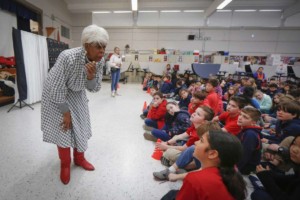
Naomi Mitchell Carrier performed passages of the “I Am Annie Mae – Musical” for students at Kolter Elementary School Friday, Feb. 21, 2020, in Houston. (Photo: Steve Gonzales, Houston Chronicle / Staff photographer)
(Houston Chronicle) In the cafeteria turned stage at Kolter Elementary School, over 100 students follow the performance of Naomi Mitchell Carrier. The mood is cheerful when she sings and they chant jazzy refrains after her, applauding after every song. But the mood becomes somber when she turns to stories about pre-Civil War slavery, segregation and racism of the Jim Crow era in Texas.
This is how Mitchell Carrier likes to share history. She combines her artistic passions for music and writing with her academic background to create an educational and entertaining experience. She calls it “live history.”
With four decades researching, documenting and preserving black history, Mitchell Carrier and the organization she leads, the Texas Center for African American Living History, is now helping lay the groundwork for the creation of the Emancipation National Historic Trail. The 51-mile route from Galveston to Houston follows the migration taken by newly freed slaves looking to build their lives after learning of the Emancipation Proclamation, which had been enacted more than two years earlier. (more)
The Walking Tours Tracing Dallas’s Forgotten Black History
Through strolls along pedestrian bridges and historic neighborhoods, local historians are elevating black Dallasites’ stories.
(Texas Monthly) On a chilly February morning, George Keaton stands on the city’s Ronald Kirk Pedestrian Bridge—named after the first black mayor of Dallas—addressing a crowd of two dozen people. As Keaton, the executive director of Remembering Black Dallas, delivers a short lecture on Dallas’s black history, a panoramic view of the city’s skyline unfolds behind him just beyond the Trinity River floodplain. “In most cities, you see that the river is a major portion of the city, or a port,” Keaton says. “We don’t really have that in Dallas anymore.”
For decades, the Trinity has been one of the most polluted rivers in Texas, so much so that the Texas Commission on Environmental Quality once ruled that the water was unsafe for extended human contact. But centuries ago, as Keaton explains, the Trinity sustained the Caddo Indians of North Texas, who relied on the river for fishing. In the 1840s, after the Native American tribes were violently removed, John Neely Bryan chose a spot along the river for its access to trade routes, and within a decade, Dallas had received an official charter from the Texas Legislature. The river would remain integral to the region’s economy, but not as an agricultural hub. “Dallas isn’t known for its cotton fields, like people think of all over the South. Dallas was really known for processing cotton,” Keaton explains. The cotton picked by enslaved people elsewhere in Texas was brought to the city by the river, and later by rail, to be milled by enslaved people in Dallas, building up the city as an industrial hub.
Keaton is a prominent, if unofficial, local historian. For the past five years, he’s been on a mission to engage Dallas residents with the city’s long and complex black history by leading bus tours and delivering lectures. (more)
TIPHC Bookshelf
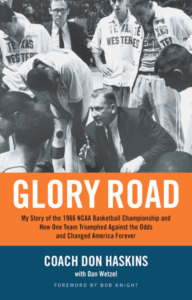 Published scholarship on black history in Texas is growing and we’d like to share with you some suggested readings, both current and past, from some of the preeminent history scholars in Texas and beyond. We invite you to take a look at our bookshelf page – including a featured selection – and check back as the list grows. A different selection will be featured each week. We welcome suggestions and reviews. This week, we offer, “Glory Road, My Story of the 1966 NCAA Basketball Championship and How One Team Triumphed Against the Odds and Changed America Forever,” by Don Haskins, with Dan Wetzel.
Published scholarship on black history in Texas is growing and we’d like to share with you some suggested readings, both current and past, from some of the preeminent history scholars in Texas and beyond. We invite you to take a look at our bookshelf page – including a featured selection – and check back as the list grows. A different selection will be featured each week. We welcome suggestions and reviews. This week, we offer, “Glory Road, My Story of the 1966 NCAA Basketball Championship and How One Team Triumphed Against the Odds and Changed America Forever,” by Don Haskins, with Dan Wetzel.
In 1966, college basketball was almost completely segregated. In the championship game for the NCAA title that year, Don Haskins, coach of the then little-known Texas Western College, did something that had never been done before in the history of college basketball. He started five black players, and in the now legendary game, unseated the nationally top-ranked University of Kentucky. Broadcast on television throughout the country, the Miners victory became the impetus for the desegregation of all college teams in the South during the next few years.
Now, for the first time, Hall of Fame coach Don Haskins tell his story. Beginning as a small-town high school basketball coach, Haskins was known for his tough coaching methods and larger-than-life personality. As a child growing up during the Dust Bowl in Oklahoma, he developed a strong set of values and discipline that he would instill in his players throughout his coaching career. With recollections from his former players, including those of the 1966 team, along with Haskins’s own Seven Principles for Success, Glory Road is the inspiring story of a living legend and one of the most respected coaches of all time.
With a foreword by basketball legend Bobby Knight, and coinciding with the release of the film “Glory Road,” the story of Don Haskins and his championship team is sure to become a classic for sports fans and historians.
This Week in Texas Black History
Mar. 15
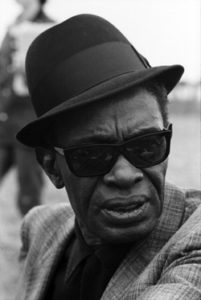
Bluesman Sam “Lightnin” Hopkins was born on this day in 1912 in Centerville. At age eight he made his first instrument, a cigar-box guitar with chicken-wire strings. By ten he was playing music with his cousin, Texas Alexander, and Blind Lemon Jefferson, who encouraged him to continue. His 60-year career began in the 1920s and he recorded for almost 20 different record companies, played at Carnegie Hall with Pete Seger and Joan Baez and toured with the American Folk Blues Festival. Hopkins also played before Queen Elizabeth in a command performance. Some of his biggest hits included “Short Haired Women / Big Mama Jump!” (1947); “Shotgun Blues,” which went to Number 5 on the Billboard charts in 1950; and “Penitentiary Blues” (1959). Hopkins recorded a total of more than eighty-five albums.
Mar. 15
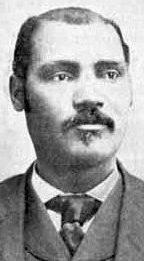
Richard Henry Boyd was born on this date in 1843. Boyd was a preacher, missionary, entrepreneur, publisher, banker, educator, writer, and Black Nationalist who was born a slave in Noxubee County, Mississippi. Though his slave master christened him Dick Gray, he changed his name to Richard Henry Boyd after the Civil War. He served as a Texas Confederate body servant near the Battle of Chattanooga during the war. In 1869, Richard Boyd became a Baptist minister and in 1872 helped organize the Negro Baptist Convention of Texas. During the 1880s, he attended Bishop College strongly believing in the ideals of Black initiative and self-help for the former slaves.
Mar. 16
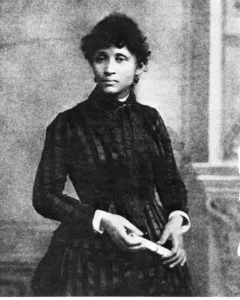
Lucy Parsons, socialist and anarchist, was born this day in 1853 in Texas, though accounts differ as to her exact birthplace. Parsons had African American, Native American, and Mexican ancestry. She was a prominent feminist and early civil rights pioneer whose commitment to class struggle brought her to the front lines of the 1886 movement for the eight-hour workday. Parsons led mass hunger demonstrations of homeless and unemployed people in San Francisco and Chicago and was a powerful orator and activist. Considered a dangerous, explosive and robust threat to authorities, the Chicago police labeled Parsons “more dangerous than a thousand rioters.”
Mar. 19
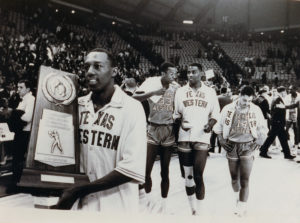
On this date, in 1966, the Texas Western University (now Univ. of Texas at El Paso) basketball team upset heavily-favored Kentucky, coached by the legendary Adolph Rupp, to win the NCAA national championship. Texas Western coach Don Haskins started five black players against the all-white Wildcats. Rupp had vowed that his team would never lose to black players. It marked the first time an all-black five competed against an all-white five in the NCAA title game. David Lattin – who starred at Houston’s Worthing High School – was the starting center for the Miners. The team’s story was highlighted in the movie, “Glory Road.”
Mar. 20
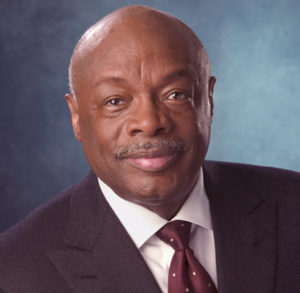
Politician Willie Brown was born on this day in 1934 in Mineola. He moved with his family to San francisco after graduating high school. Brown became the first African American speaker of the California State Assembly in 1980 and served until 1995, the longest tenure for any of the Assembly’s speakers. From 1996-2004, Brown was mayor of San Francisco. He received a bachelor’s degree in liberal studies from San Francisco State College (now San Francisco State University) in 1955 and three years later he earned a law degree from the University of California Hastings College of the Law (1958).
Mar. 21
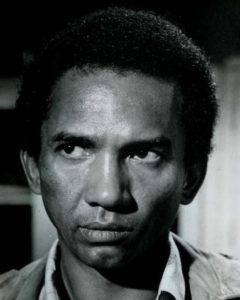
Actor Al Freeman, Jr. was born on this day in 1934 in San Antonio. Freeman starred on Broadway in the 1960s in productions such as “Tiger, Tiger Burning Bright” and in plays by James Baldwin and LeRoi Jones such as “Blues for Mister Charlie.” In 1979, he became the first African American to receive a Daytime Emmy for a soap opera for his role as a police captain on “One Life to Live.” He also drew critical acclaim for his portrayal of Malcolm X in the mini-series “Roots: The Next Generations,” and in 1991 played Elijah Muhammad in the Spike Lee movie “Malcolm X.”
Blog: Ron Goodwin, Ph.D., author, PVAMU history professor
Ron Goodwin is an assistant professor of history at Prairie View A&M University. Even though he was a military “brat,” he still considers San Antonio home. Like his father and brother, Ron joined the U.S. Air Force and while enlisted received his undergraduate degree from Texas Lutheran University in Seguin, Texas. After his honorable discharge, he completed graduate degrees from Texas Southern University. Goodwin’s book, Blacks in Houston, is a pictorial history of Houston’s black community. His most recent book, Remembering the Days of Sorrow, examines the institution of slavery in Texas from the perspective of the New Deal’s Slave Narratives.
Recent Posts
Lessons from Saturday Morning
One of my fondest memories from childhood is Saturday morning cartoons. That was the only time of the week I gladly woke up at 7 a.m. I remember rushing in my pajamas to that big(?) 19” TV to watch Bugs Bunny and Super Friends. Sometimes my mother would sit with me. But I remember not really wanting her watching cartoons with me. Its not that I didn’t enjoy my mother’s company, because I did. (more)
November 2020
So, impeachment has come and gone. Bernie Sanders is still a democratic socialist and no one will let Michael Bloomberg forget “stop and frisk.” The political season is in full bloom and for the next ten months or so we’re going to be inundated with political punditry and opinions about what will happen if…(more)
Submissions wanted
Historians, scholars, students, lend us your…writings. Help us produce the most comprehensive documentation ever undertaken for the African American experience in Texas. We encourage you to contribute items about people, places, events, issues, politics/legislation, sports, entertainment, religion, etc., as general entries or essays. Our documentation is wide-ranging and diverse, and you may research and write about the subject of your interest or, to start, please consult our list of suggested biographical entries and see submission guidelines. However, all topics must be approved by TIPHC editors before beginning your research/writing.
We welcome your questions or comments. Please contact Michael Hurd, Director of TIPHC, at mdhurd@pvamu.edu.

